ART OP-ED
Gisèle Wulfsohn’s photographs at the Wits Art Museum – A humane eye on the terror years
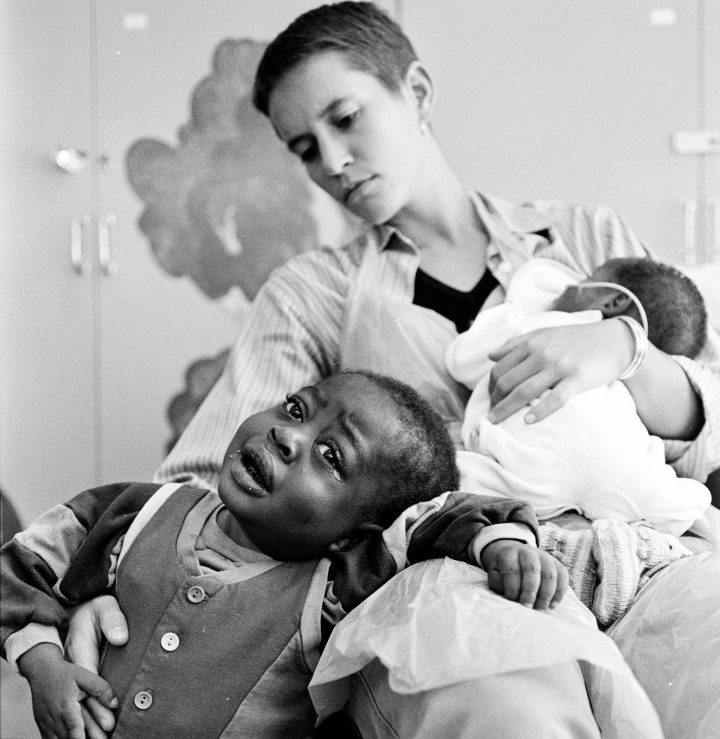
The famous photographs of the ‘Bang-Bang Club’ remind us of the fear and violence that swept South Africa during the 1980s and ’90s. Gisèle Wulfsohn’s outstanding exhibition shows another, more uplifting, angle from that time.
“Oops! The Moment! Once you miss it, it’s gone forever.”
Henri Cartier-Bresson’s idea of “l’image sauvette” as the creative element in photography – the capture of a fleeting instant electric with meaning – is everywhere to be seen at Gisèle Wulfsohn’s remarkable retrospective.
It is a big exhibition with about 400 photographs, mostly in black and white, but increasingly towards the end of her life, in colour, strikingly curated and installed by gallerist Beathur Mgozi Baker at the Wits Art Museum in Braamfontein.
It sets out to showcase more than Wulfsohn’s photography.
Other items on display to illuminate her life and artistic personality include pictures by other lensmen, her cameras, letters sent to her from across the world, and X-rays of her last illness.
It is a monument to a life and a death, as much as it is the testament of a career.
Active from the late 1970s till the early 2000s, during the chaotic and violent transition from minority to majority rule, Wulfsohn was a portrayer of South African society, with a humane perspective rather than a hard news or war chronicler.

Leonie Paul views some of the exhibits. Johannesburg, 9 November 2022. Photo: Shiraaz Mohamed.
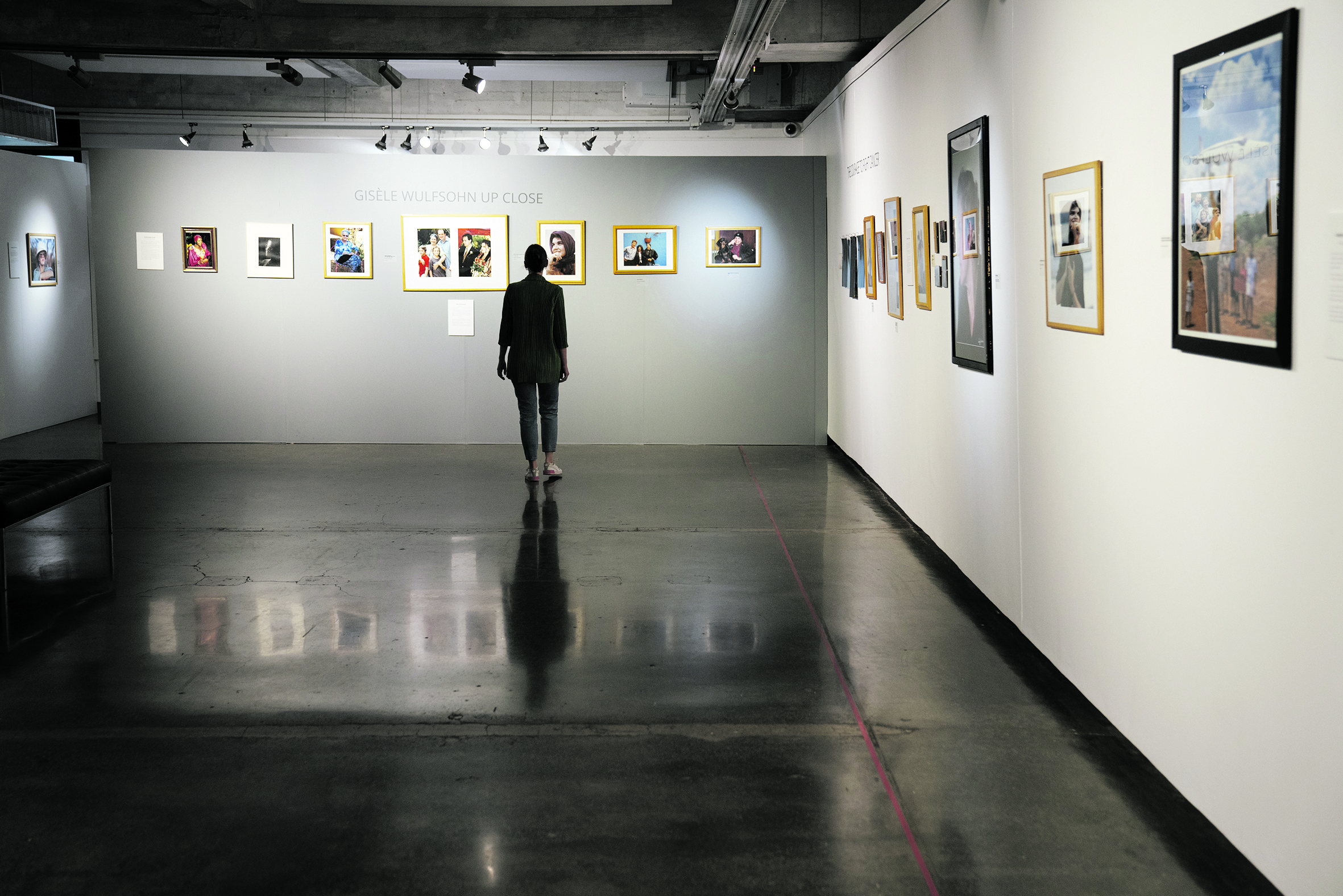
Leonie Paul as she takes a tour of the photo exhibition currently running at the Wits Art Museum . Johannesburg, 9 November 2022. Photo: Shiraaz Mohamed.

Leonie Paul as she takes a tour of the photo exhibition currently running at the Wits Art Museum . Johannesburg, 9 November 2022. Photo: Shiraaz Mohamed.

Leonie Paul as she takes a tour of the photo exhibition currently running at the Wits Art Museum. Johannesburg, 9 November 2022.Photo: Shiraaz Mohamed.

Leonie Paul views some of the exhibits. Johannesburg, 9 November 2022. Photo: Shiraaz Mohamed.

A Nikon F4 camera belonging to Wulfsohn stands on display as part of the exhibition. Johannesburg, 9 November 2022. Photo: Shiraaz Mohamed.
The exhibition features many emblematic images of the period, although none of the murder, terror and mayhem that the members of the “Bang-Bang Club”, Kevin Carter, Ken Oosterbroek et al, captured.
She took her camera wherever she went, but not to cruise the townships in the grey dawn looking for trouble or to shadow the marching amabutho of the Reef hostels, at an unsafe distance, Leica at the ready.
HIV/Aids was a particular interest of hers, and her preferred setting was a clinic, children’s ward in a public hospital, or rural camp set up to teach life skills to Aids orphans.
There is a grandeur, but at the same time a human scale, to many of her images. HIV/Aids, the world health crisis, becomes a Pietà-like tableau of a volunteer caregiver cradling a sick baby in one arm and reaching out to comfort another, with a face of boundless compassion.
There can hardly be a more charged image of the pandemic, with the same universal significance, than this. It is a potent example of Cartier-Besson’s “Decisive Moment”.
Machismo was the supreme motivation for Ken Oosterbroek, the very type of the tough-guy war snapper in a multipocket vest who dices with death. Like French Vietnam War shutterbug Olivier Todd, such men (they are almost always men) may deliberately and perversely place themselves in harm’s way.
Dare one say it without being pilloried? Wulfsohn’s Aids pictures express a female sensibility. Instead of a grim, bullet-dodging danse macabre, her work is about the resilience of sick and marginal people, their care and education, and the protective cover of friends, helpers and family.
Their central theme is human solidarity, rather than suffering, violence and mortality. In the families section, an HIV-positive man lies back and holds his gleeful child aloft; a sangoma demonstrates to her customers how to fit a condom.
The guiding light for her focus on Aids was Nan Goldin, America’s “queen of hard-core photography” and close observer of the ravages of the disease in the US.
Wulfsohn liked to get in close, and we see the same intimate focus on a historic event in her recording of the 1994 election.
What is striking is the ordinariness of her subjects and the suggestion that the planet continues its daily round, much as usual.
With, behind them, a dusty shack settlement, whites and blacks shuffle forward together in the queue; a nameless man in a beanie, folded lottery tickets in his top pocket, casually scans the Sowetan – front-page headline, “MANDELA WINS THE VOTE.”
“The age”, rather than “the moment”, is what defines another major section of the show – the “wall of notables”.
Posed portraits in black and white of eminent anti-apartheid women – the “Malibongwe series” – and assorted political leaders, these were clearly shot with an eye to the historical record.
Wulfsohn was alive to the wider world of photography, particularly of female artists, and her portraits of South African political celebrities in intimate settings are clearly coloured by the work of Library of Congress “living legend” Annie Leibovitz.
She, Goldin and Leibobitz are all artists from middle-class Jewish families. Judaism is not an explicit theme in the exhibition, but it clearly mattered to her.

Wits Art Museum staff members, Vuyiswa Ngesman (L) and Fiona Smith (R) take time out to view the exhibition. Johannesburg, 9 November 2022. Photo: Shiraaz Mohamed.
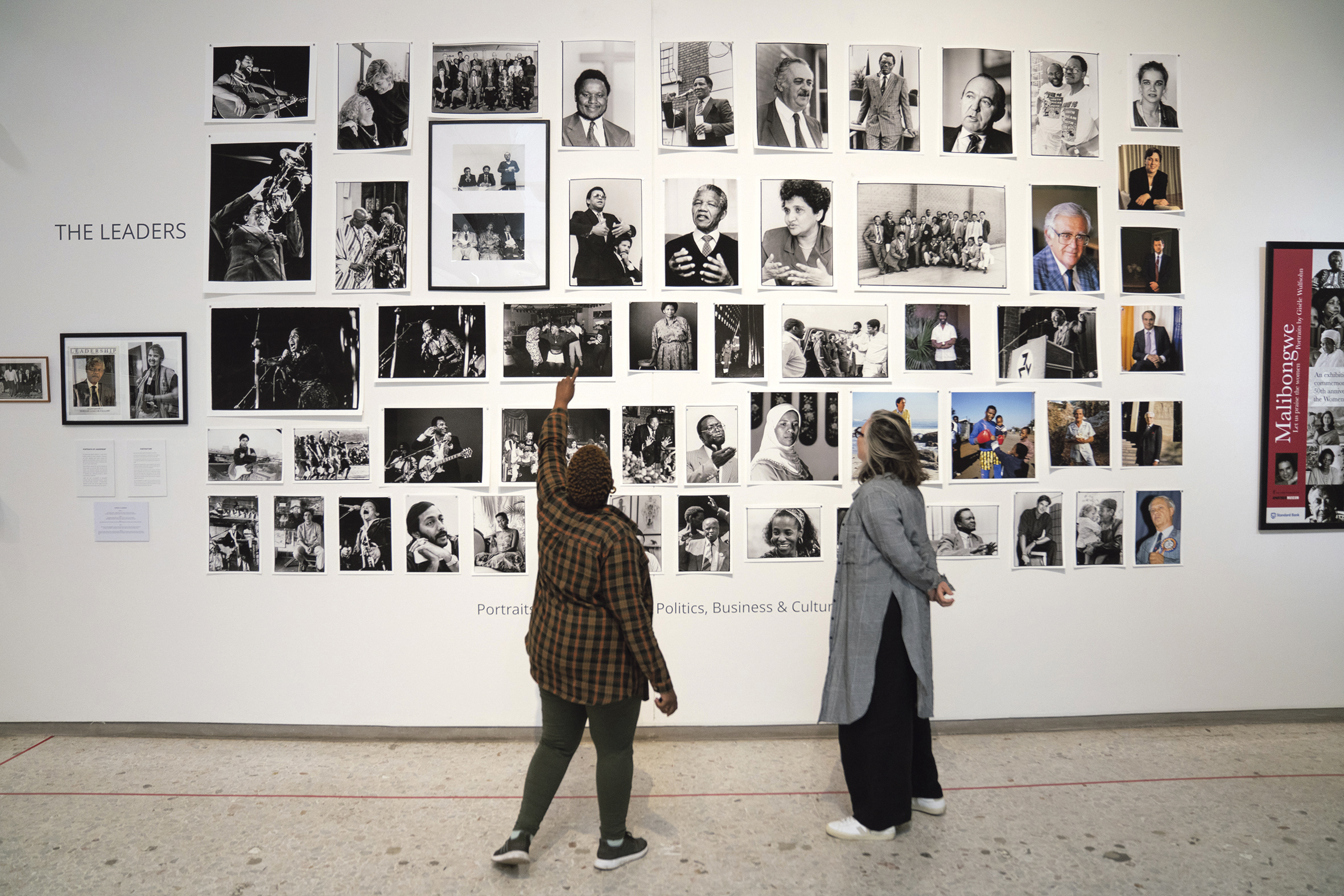
Wits Art Museum staff members, Vuyiswa Ngesman (L) and Fiona Smith (R) take time out to view the exhibition. Johannesburg, 9 November 2022. Photo: Shiraaz Mohamed.
The portrait sittings took time and were preceded by elaborate negotiations with the subject. Wulfsohn’s former husband, Mark Turpin, described how she objected strongly to being given only five minutes with Nelson Mandela, telling Zelda la Grange, his assistant, that she never took less than half an hour. Mandela gave way.
The result suggests contrasting sides of the great man. One photograph shows his ebullient side, grinning broadly in his Shell House office; in another there is a strong hint of the fatigue and sadness born of age and his “long walk”.
In yet a third, taken some years later in the garden of his lawyer George Bizos, he radiates personal power as South Africa’s first democratic leader and the stern patriarch of Pondo royalty.

Nelson Mandela by photographer Gisele Wulfsohn. Courtesy of the Gisele Wulfsohn Family Trust & Archives’.
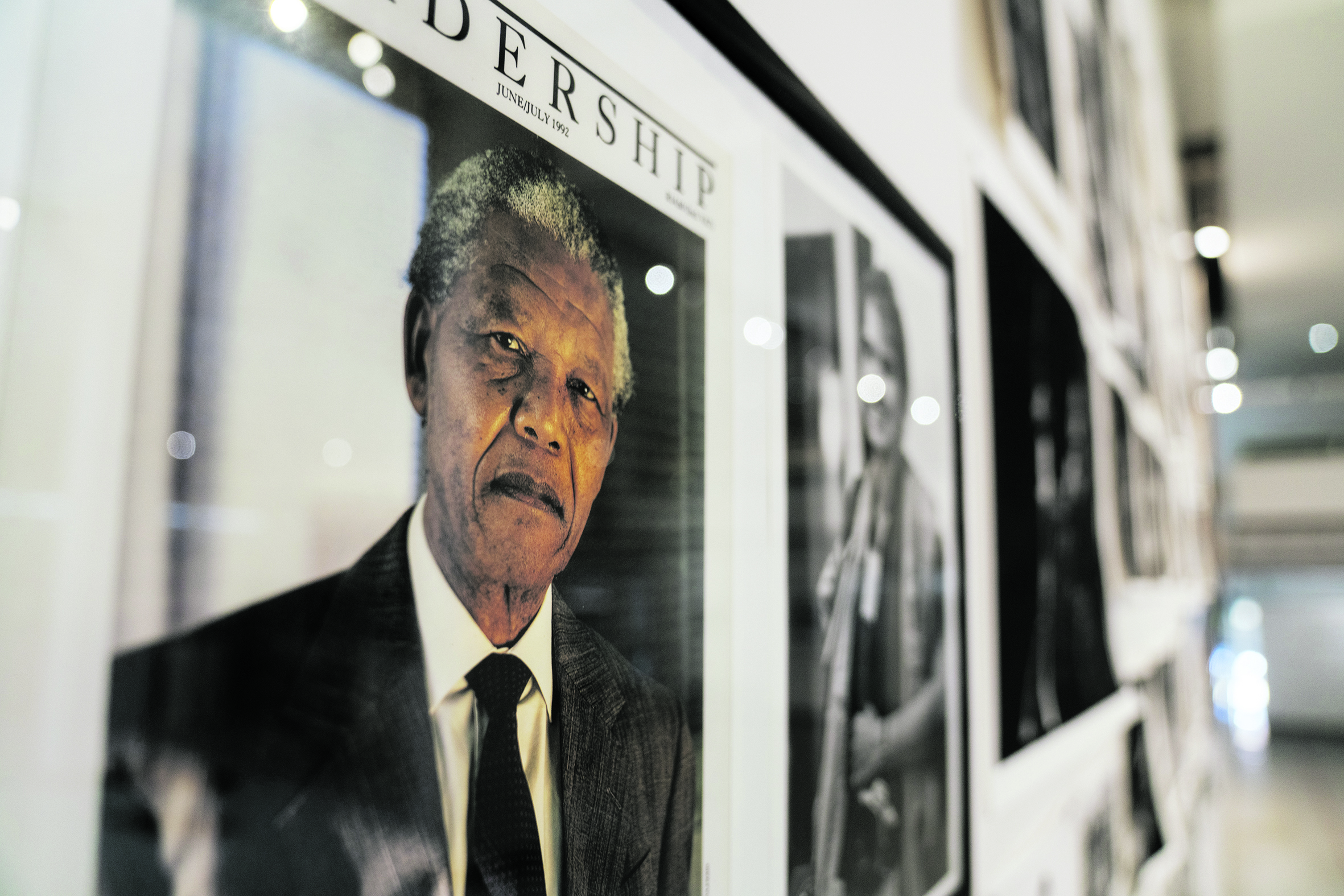
A portrait of Nelson Mandela hangs on display as part of the exhibition. Johannesburg, 9 November 2022. Photo: Shiraaz Mohamed.
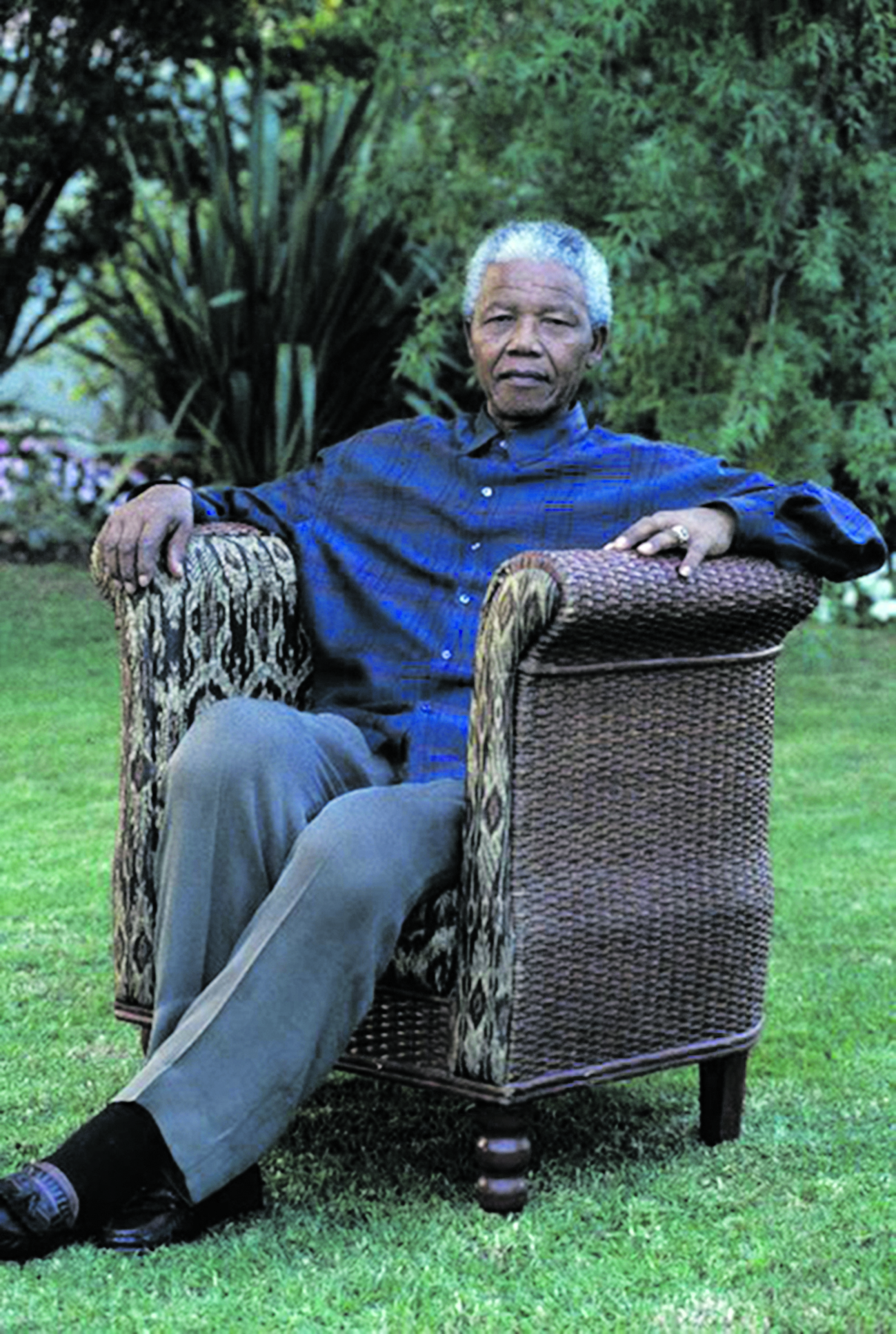
Nelson Mandela by photographer Gisele Wulfsohn. Courtesy of the Gisele Wulfsohn Family Trust & Archives’.
It is the common humanity of her subjects that is arresting. The touching full-length colour portrait of Albie Sachs captures him as a lone figure on a beach, one arm of his shapeless yellow jersey hanging empty.
Perhaps the most striking is that of Adelaide Tambo, wife of ANC president Oliver Tambo, who asked to be pictured wearing the exact jewellery and white linen dress she wore at her wedding during the Treason Trial in December 1956.

‘Queen’ Adelaide Tambo, pictured in her original wedding dress and jewellery. Photo: ‘By photographer Gisele Wulfsohn. Courtesy of the Gisele Wulfsohn Family Trust & Archives’.
With a slightly supercilious expression, she drapes herself over an ornate sofa. Adelaide, a woman of imperious manner and pontifical speech, was very much the queen of the exiled ANC in London.
The selection has been faulted for favouring the ruling party and its government, which it clearly does, but this misses the point. Wulfsohn chose the important actors and faces that interested her; she was not a licenced portraitist bound to be fair to all sides.
And some non-ANC figures do get a look-in, including Constand Viljoen – whose portrait captures the man’s strange uprightness – Pik Botha, and Helen Suzman, a great South African woman.
Wulfsohn’s idiosyncratic, upbeat and humanist aesthetic is again underscored by the display “Flag Nation”, which offers a fond look, in colour, at the patriotic explosion of flag-waving during the 2010 Fifa World Cup.
In a rare celebration of the country’s oneness, the national colours blossom jubilantly on vuvuzelas, flags attached to people’s head, hardhats, the bibs of security guards, dangling from car windows, on beadwork headgear and a beadwork copy of the World Cup trophy.
Finally, in the poignant upstairs section, the photographer and her friends and fellow professionals turn the camera on Wulfsohn herself.
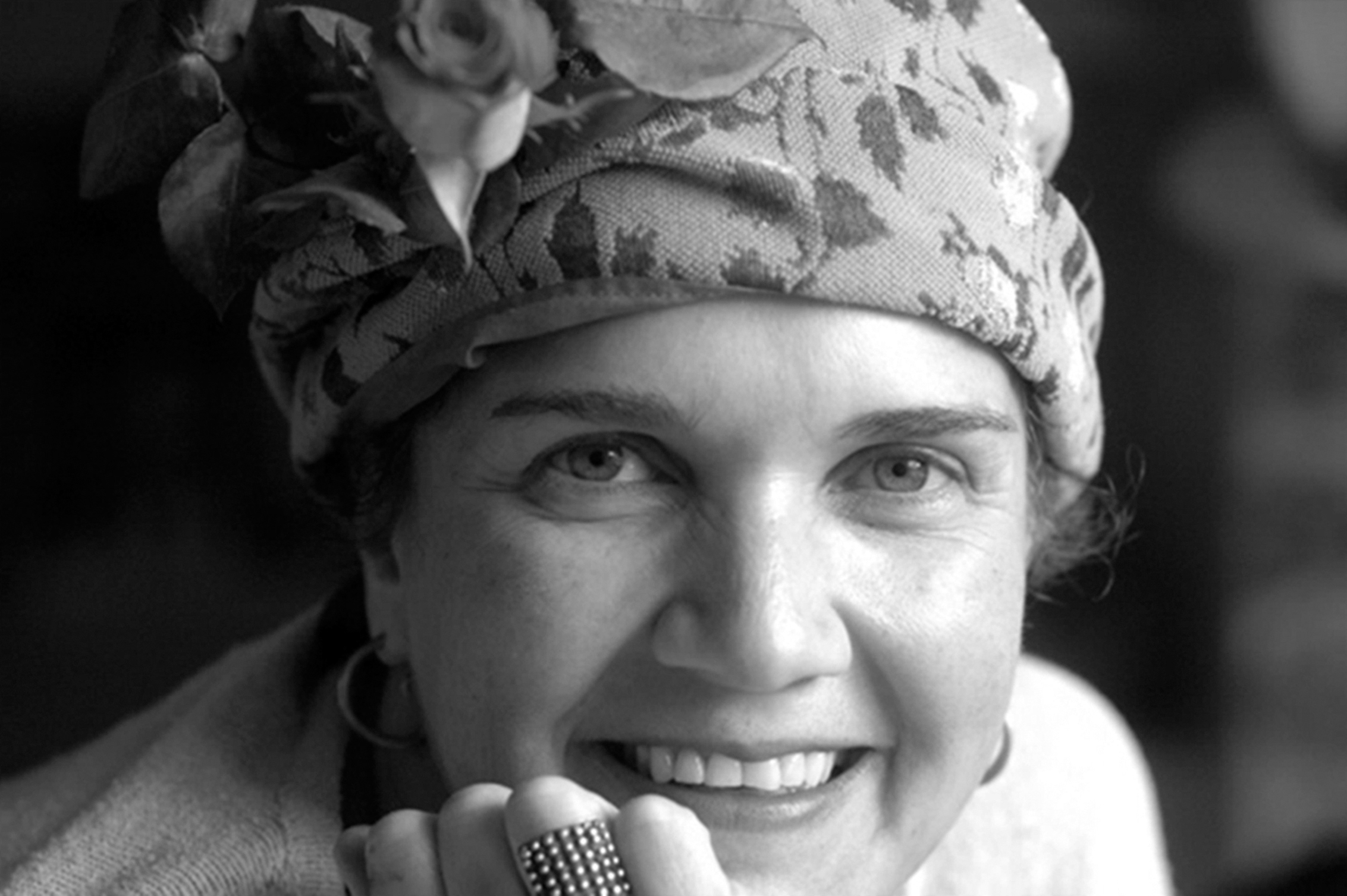
An optimist and a humanist, Gisele Wolfsohn pictured at the other end of the camera.
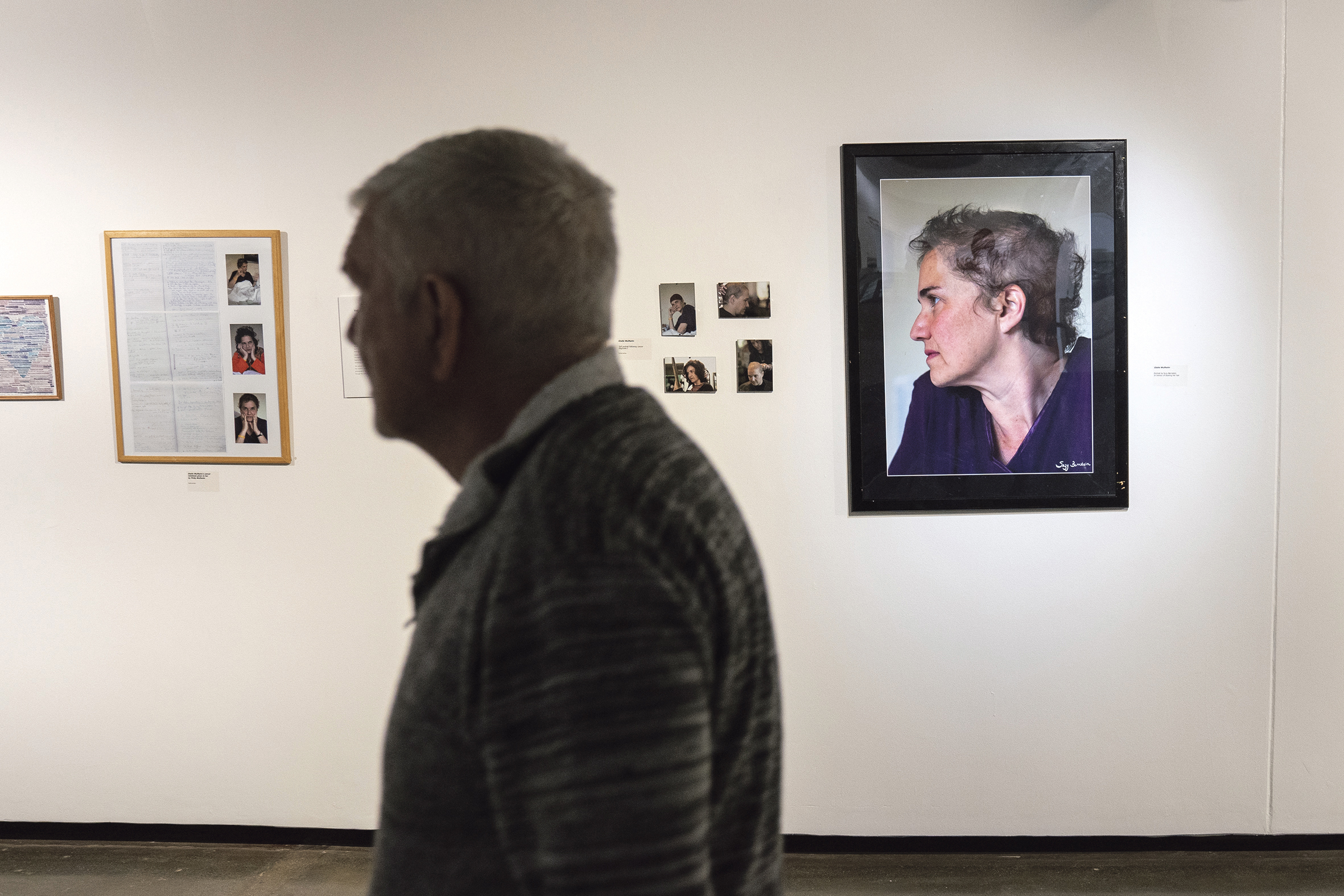
Journalist Andrew Forrest walks past a portrait of Gisèle Wulfsohn, after she started losing her hair due to cancer. Wulfsohn was a freelance photographer specialising in portraiture, education, health and gender issues. Johannesburg, 9 November 2022.
Photo: Shiraaz Mohamed.
She died of cancer in 2011 at the age of 54, and with the cameraman’s devotion to documenting reality, spent the last six years of her life keeping visual tabs on what was happening to her.
There is a moving profile of her, almost a clinical study, by local photographer Suzy Bernstein, showing the hair loss that followed her chemotherapy.
Notes made in her own hand while conferring with her specialists have been converted into a framed montage. Even the X-rays of her cancer, with the specialist’s markings, are on display.
“Her Eye on the Storm”, which runs until the end of the month, is a brilliant reflection of a tumultuous, terrifying and uplifting period of our history.
Everyone who cares about photography and South Africa should see this exhibition. DM/ML
The exhibition runs until 19 November at the Wits Art Museum in Braamfontein. Gallery hours: Tuesday-Saturday, 10am-4pm. Mask wearing is voluntary, although WAM continues to encourage Covid safety protocols.
Visit Daily Maverick’s home page for more news, analysis and investigations


















Comments - Please login in order to comment.